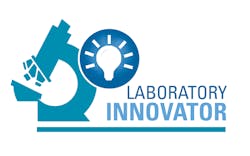How did you get interested in the clinical market?
How did you get involved with the NIH?
I got involved with the National Institutes of Health (NIH) through the Rapid Acceleration of Diagnostics (RADx) initiative. As a part of my business development role, we were looking for partners that could help accelerate our path to market. The RADx initiative was launched to speed innovation in the development, commercialization, and implementation of technologies for COVID-19 testing. The program has been everything I hoped it would be. We were able to access funding due to the orthogonal technology base BAW provides, and that has been important to help Qorvo build scale, which is a vital factor when offering a solution for a pandemic.
How is high frequency bulk acoustic wave (BAW) technology similar to molecular testing capability?
The similarities are in performance for POC platforms. Molecular is a gold standard because it can go through multiple amplification cycles to achieve good levels of sensitivity and specificity. Lateral flow antigen technologies are not able to leverage this approach, sometimes leading to higher levels of false positives and negatives because the baseline technology is not able to detect low levels of the virus in the same way. BAW is an approach that is focused on changing the way antigen tests detect the virus. The sensitivity of the assay on surface mass-based product is related to the frequency. BAW operates at approximately 3 GHz (3 billion cycles per second). This, combined with proprietary enhancement techniques, drives detection capability at near molecular levels. The way I like to describe it is that you’re shaking as fast as you can, and someone drops a 30-pound bag of cement on you. With the added mass you’re unable to shake as fast. That’s effectively what BAW does. It detects very small changes in mass from low levels of the disease analyte.
Could this technology be used for other diseases, such as cancer?
The technology is most certainly expandable for an extensive test menu. The instrument is the same for all tests, so as the menu offering grows, the investment clinical labs make in training and certification can have a great return. We leverage capture-detection protein binding properties in a multiplex product. This means we buy commercial proteins so if sandwich assays are known or exist, we can translate them to this platform (along with novel biomarkers). The multiplex means we can test for multiple analytes from a single sample type.
What do you foresee in the future of antibody and antigen testing?
I do believe that as we move forward, there will be three main areas of testing focus (asymptomatic antigen, symptomatic antigen, and antibody). Asymptomatic testing will likely continue for an extended period. Most antigen products are only approved for asymptomatic testing if used in screening applications every 48-72 hrs. I want to enable a market that can use antigen tests (improved workflow and lower cost than molecular) more in the way molecular tests are used, with being able to test asymptomatic patients at any time without screening restrictions. If the opportunity for transitioning these populations to pooled testing at POC can be done, I see tremendous benefit from major reductions in cost and increases in testing throughput — all without sacrificing the levels of quality clinicians and patients expect. The symptomatic antigen option will be addressed by multiple companies’ offerings, given that the high viral loads enable multiple tests to be clinically effective, and the volume of testing needed is high. In the future, as COVID becomes more endemic, I believe that symptomatic testing will drive towards COVID/ flu combo tests. The tests will need to move beyond many of today’s antigen solutions where the COVID and flu performance creates challenges for clinicians. It’s going to be critical for clinical labs and patients alike to have access to accurate testing, given the differing treatment pathways of COVID vs. flu. Finally, antibody testing at POC has until now been qualitative lateral flow. With the vaccine transition, I’ve seen a significant shift in approved tests towards semi-quantitative platforms in the central lab, which means there is a level of antibody associated with the sample.
Is there anything else you would like to add?
I feel like what we’re all working on is something that is having (and will continue to have) a tangible impact on society and the way we live our lives. It’s an impact that I’ll be proud to tell my grandkids about


